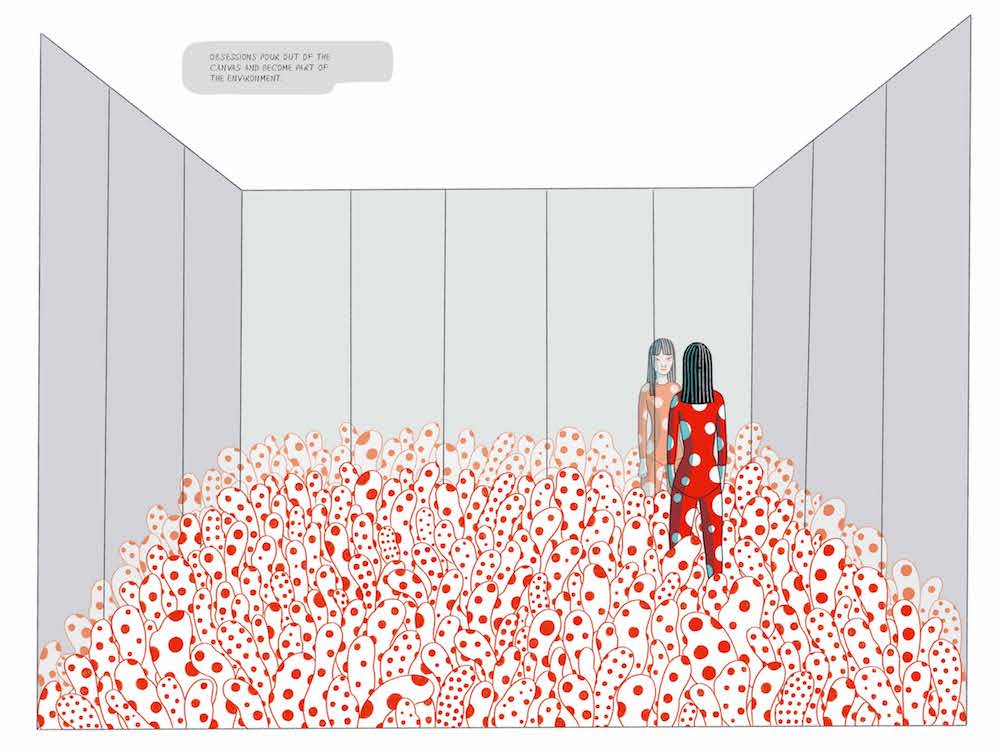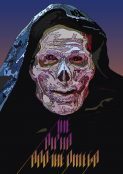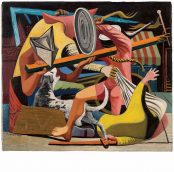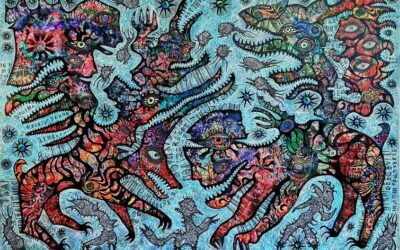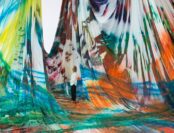[dropcap style=”font-size:100px;color:#992211;”]F[/dropcap]amous for her squashes and polka dots, popular Japanese artist Yayoi Kusama has become the cause célèbre of the modern art world. Unfortunately due to current restrictions, her latest exhibition Yayoi Kusama: Infinity Mirrored Rooms at Tate Modern has been postponed until next year. Lament not Kusama fans; Elisa Macellari has crafted a beautifully illustrated graphic novel to fix the hole in the soul of any addict of the avant-garde in need of a Kusama fix.
Kusama: The Graphic Novel is a sumptuous exploration of the artist’s life from humble roots in post-Hiroshima Japan, through 1960s pop art, to her status now as queen of Japan’s modern art scene. It is a delicate and illuminating work, a travelogue that maps Kusama’s outward navigation through childhood trauma, artistic expression, and the inward inflective illness that came to illuminate her practice. Moving through time, Macellari’s pen gives as much space to the tangible world of the free-loving 60s and the artists who worked with and inspired Kusama, as she does to her infinite inner landscapes and life with the complex mental health issues that drive and inform her work.
Born into the aftermath of post-war Japan, living with warring parents dismissive of her talent and creative ability, Kusama’s career began to flourish when she moved to America. There, her conflicted world could find a spiritual home, and the turbulent 60s saw the genesis of Kusama’s radical artistic transformation. Taking the New York art scene by storm, her revolutionary ideologies translated into a vocabulary of phobias; nudity, giant-phallic boats and love-ins challenged the patriarchal, stuffy world of ‘dead’ art and artists and injected it with vibrancy, lived experience and life. Kusama psychically and physically blurred the boundaries between personal and collective consciousness. Courted by artists like Warhol and Dalí, Kusama conducted the zeitgeist of the time; casting her infinity net into the ocean of subjectivity, she formed timeless pieces of work that crackle with static originality. All of this is lovingly illustrated by Macellari.
The novel is also a beautifully empathetic deep dive into the world of long-term, organic, psychic disorders, and Kusama’s use of art as self-medication. Macellari breaks down in graphic simplicity the complex, turbulent life of a person prone to anxiety, depersonalisation and panic attacks. Kusama utilised both her body and mind to become a conduit for these factors to play out and heal in a liberating swirl of experimental, psychedelic exposure therapy. Macellari illustrates these acts of artistic alchemy in which the two worlds collide to produce profound works of deep insight into a hitherto unknown expanse.
Kusama’s arresting visual style and motifs captured the hearts and minds of a generation, and the inclusivity of her art is well suited to the technicolour vividness of the graphic format. Macellari has accomplished the near impossible: by blending the seen and unseen aspects of Kusama’s life, she has produced a worthy addition to artist biographies that can be appreciated, much like Kusama’s work, by a universal audience eager to gaze in childlike wonder and marvel at the world through Kusama’s unique visionary eye.
Kusama: The Graphic Novel is available from Laurence King Publishing now.
I write short stories and poetry alongside studying religion and anthropology at the University of Manchester. My story “Girl’s World” was in the highly recommended list for the Manchester Fiction prize 2019.

